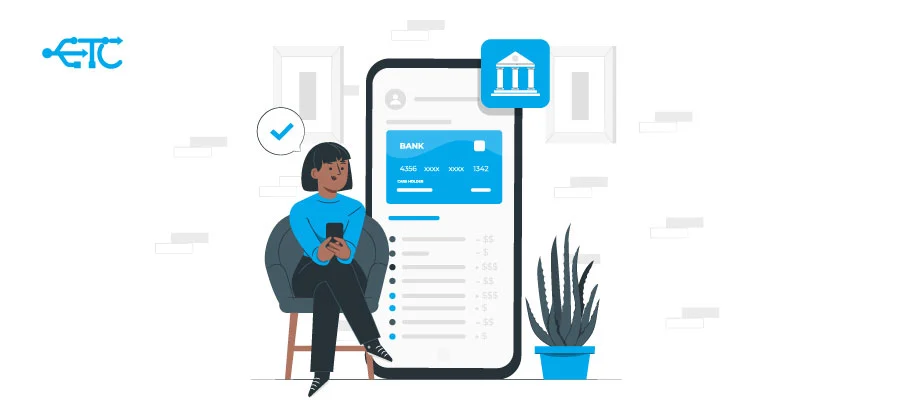Mobile Banking Application Development: Revolutionizing Financial Services

In the fast-paced digital era, where smartphones have become an integral part of our daily lives, mobile banking applications stand at the forefront of transforming the way we manage our finances. The development of mobile banking applications has not only brought convenience to users but has also revolutionized the entire landscape of financial services.
In this article, we’ll delve into the intricacies of mobile banking application development, exploring its key components, challenges, and the impact it has on the banking industry.
The Essence of Mobile Banking Applications
Mobile banking applications are software applications that allow users to access and manage their bank accounts through their mobile devices. These applications provide a range of services, from basic functionalities such as checking account balances and transaction history to more advanced features like fund transfers, bill payments, and even investment management.
Key Components of Mobile Banking Applications
1️⃣User Authentication and Security:
Robust authentication mechanisms, including biometrics and two-factor authentication, ensure the security of user accounts.
Encryption techniques safeguard sensitive data, providing a secure environment for financial transactions.
2️⃣ Account Management:
Users can view account balances, monitor transactions in real-time, and access statements through a user-friendly interface.
3️⃣ Fund Transfers:
Seamless money transfers between accounts, both within the same bank and to external accounts, are a fundamental feature of mobile banking apps.
4️⃣ Bill Payments:
Integration with billing systems allows users to pay bills directly from their mobile devices, streamlining the payment process.
5️⃣Mobile Deposits:
Advanced functionalities, such as mobile check deposits, enable users to deposit checks by capturing images through their smartphones.
6️⃣Push Notifications:
Real-time alerts and notifications keep users informed about account activities, ensuring transparency and security.
7️⃣Customer Support:
In-app customer support features, including chat support and FAQs, enhance user experience and address queries promptly.
Challenges in Mobile Banking Application Development
While the benefits of mobile banking applications are evident, their development comes with its own set of challenges:
1️⃣Security Concerns:
With sensitive financial information at stake, ensuring the highest level of security against cyber threats is paramount.
2️⃣Cross-Platform Compatibility:
Developing applications that function seamlessly across various mobile platforms (iOS, Android) requires meticulous planning and testing.
3️⃣Regulatory Compliance:
Compliance with banking and financial regulations is crucial to avoid legal issues and maintain the trust of users.
4️⃣User Experience:
Striking the right balance between security measures and providing a smooth, user-friendly experience is a constant challenge.
5️⃣Integration with Legacy Systems:
Integrating modern mobile applications with existing banking infrastructure and legacy systems requires careful consideration.
Impact on the Banking Industry
The development of mobile banking applications has significantly impacted the banking industry in several ways:
1️⃣Increased Accessibility:
Users can access their accounts and perform transactions from anywhere, reducing the dependency on physical branches.
2️⃣Cost Efficiency:
Mobile banking reduces operational costs for banks by automating processes and decreasing the need for physical infrastructure.
3️⃣Enhanced Customer Engagement:
The interactive features of mobile banking applications enhance customer engagement, leading to stronger relationships between banks and their clients.
4️⃣Innovation and Competition:
The competition among banks to provide cutting-edge mobile banking solutions has led to continuous innovation, benefiting consumers with advanced features and improved services.
5️⃣Financial Inclusion:
Mobile banking has played a vital role in financial inclusion by providing banking services to individuals who were previously underserved or excluded from traditional banking systems.
Future Trends in Mobile Banking Application Development
As technology continues to evolve, several trends are shaping the future of mobile banking application development:
The development of mobile banking applications has significantly impacted the banking industry in several ways:
1️⃣Blockchain Integration:
Blockchain technology is being explored for its potential to enhance the security and transparency of financial transactions.
2️⃣Artificial Intelligence (AI):
AI-powered chatbots and virtual assistants are becoming integral for providing personalized customer support and financial advice.
3️⃣Biometric Authentication Advancements:
The advancement of biometric technologies, including facial recognition and fingerprint scanning, is enhancing user authentication and security.
4️⃣Augmented Reality (AR):
AR is being explored for creating immersive and interactive banking experiences, especially in areas like investment visualization and property valuation.
5️⃣Open Banking Initiatives:
Open banking frameworks are fostering collaboration between financial institutions and third-party developers, leading to the creation of innovative, interconnected financial services.
Conclusion
The development of mobile banking applications has undoubtedly transformed the way individuals interact with their finances. From providing convenience and accessibility to fostering innovation and financial inclusion, these applications have become indispensable in the modern banking landscape. As technology continues to advance, the future holds even more exciting possibilities for mobile banking, promising a seamless and secure financial experience for users around the globe.
